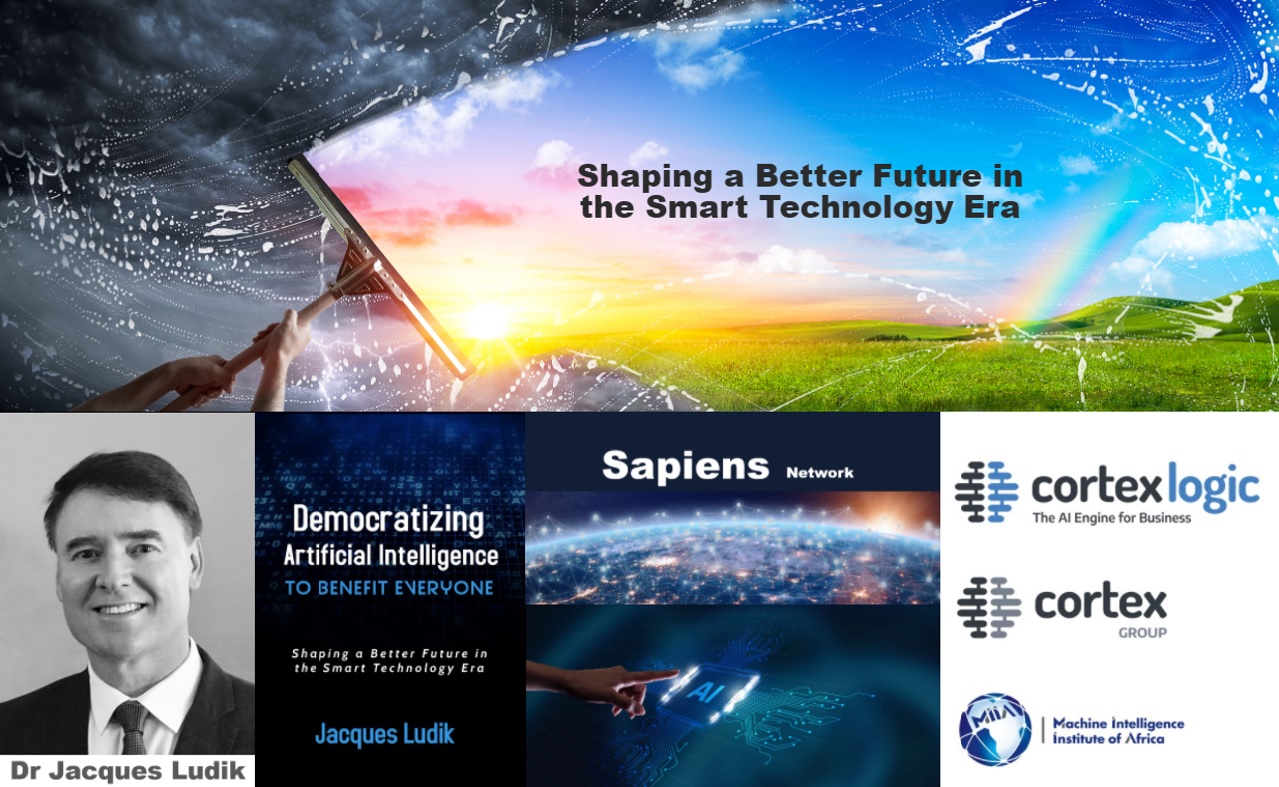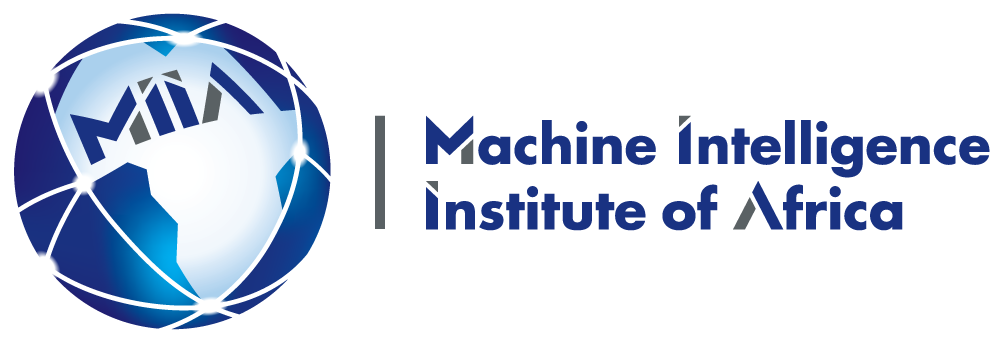
Democratizing AI to Benefit Everyone
As some of you might know I have shared the announcement a few days ago on LinkedIn and Twitter about the great pleasure and honor to present my most recent book “Democratizing Artificial Intelligence to Benefit Everyone” which is not only a sense-making journey on democratizing AI to benefit everyone, but also introduces a Massive Transformative Purpose (MTP) for Humanity and its associated goals to help shape a beneficial human-centric future (which complements the United Nations’ 2030 vision and SDGs) along with Sapiens (sapiens.network) as a decentralized human-centric user-controlled AI-driven super platform to empower individuals and monetizes their data and services and can be extended to companies, communities, cities, city-states, and beyond.

With this article I’m excited to start a series of articles, posts, and podcasts based on the some of the key content that I share in this book to help further stimulate discussions about various very important topics that I believe are key to our progress as humanity and instrumental in helping to shape in better future for as many people as possible in the Smart Technology Era, which also ties into my personal MTP as well as those of my companies and organizations. Not only is the book aimed to help with the drive towards democratizing AI and its applications to maximize the beneficial outcomes for humanity, but I’m also specifically arguing for a more decentralized beneficial human-centric future where AI and its benefits can be democratized to as many people as possible. I therefore also examines what it means to be human and living meaningful in the 21st century and share some ideas for reshaping our civilization for beneficial outcomes as well as various potential outcomes for the future of civilization.
As mentioned in the book description, “we live in exhilarating times where we already experience the disruptive and profound impact of a smart technology revolution with AI as one of the key exponential technologies that seems to be on track to change how we live, work, play, interact, and relate to one another in an all-inclusive and wide-ranging fashion. Besides the impact of the Smart Technology Era that is felt in almost every industry in every country and entire systems of production, management, and governance being transformed, we also see also our current civilization on a problematic trajectory where we struggle with sense-making, meaning-making, wealth gaps, job loss, catastrophic risks, discrimination, data abuse, bias, human agency, dependence lock-in, institutional decay, as well as disorder and destabilization of society. It is a time where we need visionary leadership, sense-making, wisdom, and practical actions to ensure that humanity and our civilization is moving in the right direction as we work towards unlocking the tremendous potential of AI and smart technologies.”
Democratizing Artificial Intelligence to Benefit Everyone does not only take us on a holistic sense-making journey and lays a foundation to synthesize a more balanced view and better understanding of AI, its applications, its benefits, its risks, its limitations, its progress, and its likely future paths, but also taps into some of my personal experience in AI and its applications over three decades in academia and the private sector in multiple industries across the globe. As mentioned elsewhere, “this book also synthesizes, assimilates, and acts as a filter on a wide spectrum of thought leadership, information, ideas, and research to enable as many people as possible to not only interpret and make sense of this, but also participate in helping shape a better future for ourselves, our children and humanity going forward. It helps us to more accurately understand where we are heading given the current dynamics on a global and national economic and political level as well as across ideologies and industries. Specific solutions are also shared to address AI’s potential negative impacts, designing AI for social good and beneficial outcomes, building human-compatible AI that is ethical and trustworthy, addressing bias and discrimination, and the skills and competencies needed for a human-centric AI-driven workplace.”
Quoting from the book “So, although the aim of the book is to help with the drive towards democratizing AI and its applications to maximize the beneficial outcomes for humanity, a big part of the book has also been dedicated to this sense-making journey as a foundation for democratizing AI and to more accurately understand where we are heading given all the current dynamics on a global and national economic and political level as well as across ideologies, industries, and businesses. There is lot of fantastic thought leadership, information, ideas, and research out there that we can tap into and benefit from if we can properly synthesize the material, make sense of it, be clear about what we want to achieve, plan properly, collaborate and then execute. This book therefore also acts as a filter on those thoughts, information, ideas, and research to enable as many people as possible to not only interpret and make sense of this, but also participate in helping shape a better future for ourselves, our children and humanity going forward. It also provides a snapshot of our current reality across the spectrum and the varied insightful opinions out there. Where relevant and in the spirit of decentralized knowledge sharing and sense-making, I also highlight or emphasize certain perspectives from some of the best resourced research and consulting organizations and thought leaders as well as ideas and thoughts from people that might not be well known in many circles but have important perspectives that needs to be considered as part of synthesizing a more balanced view. To get a proper grip on and understanding of other people’s point of view, it is important to steel man their opinions instead of straw manning it. In this book I share many different perspectives on AI’s impact on society and its potential benefits, risks, concerns, challenges, progress, lessons learnt, limitations, future paths, and research priorities. One example is making sense of the debates on AI’s future path and impact on humanity, which is like a roller-coaster ride of disparate ideas and thoughts from a wide spectrum of experts and people of all walks of life and driven by a combination of trepidation and enthusiasm about the monumental risks and opportunities that AI presents in the 21st century and beyond. I also share specific solutions to address AI’s potential negative impacts, designing AI for social good and beneficial outcomes, building human-compatible AI that is ethical and trustworthy, addressing bias and discrimination, and the skills and competencies needed for a human-centric AI-driven workplace.“
Furthermore, with this book, “the aim is to not only understand AI’s transformative powers, benefits, risks, and future direction, but explore the beneficial outcomes that we want for humanity, a vision of the future, real projections forward, real smart technology-driven solutions, and how we can address the problems that prevent us from achieving beneficial outcomes for humanity. In this, we ask our own questions, offer an analysis that aims to diagnose and a framework to propel action and solve problems on multiple levels. To do this, first, we must ensure we are deeply thinking about the questions that may set the world on a path to a sustainable future. We ask and answer the questions that the world is asking, in this way, and the questions we do not yet know to ask. Each chapter of this book will directly or indirectly ask and answer a few questions, which carry different levels of depth and various purposes. Sometimes, the aim is simply to provide information for background purposes, sometimes to explain why it matters and provide several vantage points for sense-making and sometimes it is to challenge. Throughout, the aim of this book and the questions it tackles are to help guide every leader, every problem solver, and every individual towards a fruitful, ethical, sustainable, and beneficial human-centric future and democratizing AI to benefit everyone. Although I have tried to keep the content throughout the book at a level that is simple enough for layman’s understanding, there might be some sections in some of the chapters that are slightly more technical and information rich that can be skipped for readers that choose to do so. The key is to get an overall sense of where we currently are on our AI journey as a civilization so that we can maximize participation of as many people as possible to help shape that better future that we collectively want for ourselves and humanity.”
In Chapter 2, “I focus on the Smart Technology Era to give a broader perspective of where AI fits in with respect to our past and current revolutions and start thinking about some of the challenges and rewards that AI presents in this new era. In Chapter 3 the focus is on AI as key exponential technology and how it is transforming our world in the Smart Technology Era. It also provides a brief historical overview of AI, which is followed by an unpacking of AI in terms of its many subfields, the man-machine intelligence continuum with respect to assisted, augmented, and autonomous intelligence, and how AI relates to the Internet of Things, blockchain and the future of computing. The chapter is concluded with a section on our responsibility in directing AI for beneficial outcomes. Chapter 4 does a deep dive into what AI-driven digital transformation of the business enterprise looks like, discussing the importance of being agile, how AI solutions and technology partners can help accelerate companies on their AI-driven transformation journeys, and how AI is changing business processes. AI’s significant impact on the workplace, employment, and the job market is discussed next along with AI-driven human-computer interfaces such as intelligent virtual assistants that are becoming the new face of customer-centric businesses and customer services. As cybersecurity is becoming an increasing risk especially as business are becoming more digitized, AI has a huge role to play to help defend against a spectrum of evolving cyber-attacks that might also be AI-driven. The focal point of the next three chapters 5, 6, and 7 is on AI applications across multiple industries. Whereas Chapter 5 highlights how AI is revolutionizing personalized engagement and other applications for consumer facing businesses, Chapter 6 gives an overview of AI-powered process and equipment enhancement and other applications across the industrial world. Chapter 5 specifically considers AI’s comprehensive impact on financial services, retail, ecommerce, telecommunications, media, entertainment, transportation, travel, and tourism. Chapter 6 examines the impact of AI on utilities and the energy sector, as well as AI applications in resources, manufacturing, and agriculture. Chapter 7 explores AI applications in key areas of civilization namely education, healthcare, and wellness, and specifically how AI is transforming these sectors as they become more instrumented which in turn enables better personalization and accuracy in the delivery of tailor-made solutions. Chapter 8 considers AI’s impact on society, governments, and the public sector, the potential benefits of AI for society and social good, as well as the risks, concerns, and challenges of AI for society. This chapter is concluded by showcasing some AI applications in the public sector, and an overview of governmental AI strategies, policies, and adoption across the globe. In Chapter 9, I am making sense of the AI debates on AI’s future path and impact on humanity, a fascinating comparison of human intelligence versus machine intelligence, AI lessons learnt, and the limitations of the current AI technology. I conclude that chapter with an overview of the current state-of-the-art AI techniques and the progress, research priorities, and likely future paths of AI. All these chapters are laying the foundations for the next three chapters which is the crescendo of this book and discusses beneficial outcomes for humanity, democratizing AI to help shape a beneficial human-centric future, and introducing Sapiens, the human-centric user-controlled AI-driven super platform for humanity. Chapter 10 specifically explores what it means to be human and living meaningful in the 21st century, the problematic trajectory of our current civilization, issues, and ideas for reshaping our civilization for beneficial outcomes, and various potential outcomes for the future of Civilization. That chapter is then wrapped up by discussing beneficial outcomes for humanity and introducing a proposed massive transformative purpose for humanity and its associated smart goals that complement the United Nations’ 2030 vision and sustainable development goals. In Chapter 11 various aspects of democratizing AI to help shape a beneficial human-centric future is unpacked such as solutions to address AI’s potential negative impacts, a framework for strategic planning, designing AI for social good and beneficial outcomes, building human-compatible, ethical, trustworthy, and beneficial AI, addressing bias and discrimination, and the required skills, competencies, and jobs for a human-centric AI-driven workplace. The final chapter concludes with an introduction and invitation to people around globe to participate in the development, deployment and use of Sapiens, a decentralized human-centric user-controlled AI-driven super platform with personalized AI agents that not only empower individuals and monetizes their data and services, but can also be extended broader to communities, businesses, and city-states. In the Appendix I highlight a specific project of the Machine Intelligence Institute of Africa (MIIA) on democratizing human-centric AI in Africa.“
As mentioned in my initial announcement, many thanks to my many friends and business colleagues over the years across the globe who have contributed to my life in various ways for which I am very grateful and appreciative. Thanks also to everyone that inspired me and from whom I have learned so much within the international AI community, intellectual virtual communities, the African AI community, technology hubs, as well as businesses and organizations that my companies have interacted with, and many more.
Apart from the audiobook that I also plan (to complement the current eBook (Kindle) and paperback versions), I’m looking forward to engage with as many people as possible about the contents in this book through various channels, including podcasts, presentations, articles, posts, and tweets.
I would like to invite anyone across the globe that wants to follow, participate and contribute towards developing, deploying and using Sapiens as a decentralized human-centric and user-controlled AI-driven super platform to connect with us on sapiens.network and our associated community groups and social media.
Let us together shape a better future in the Smart Technology Era!
Jacques Ludik
Some relevant links:
- https://www.amazon.com/Democratizing-Artificial-Intelligence-Benefit-Everyone-ebook/dp/B08ZYW9487/
- https://www.linkedin.com/pulse/ai-perspectives-jacques-ludik
- https://jacquesludik.com
- https://sapiens.network
- https://miiafrica.org/books/



